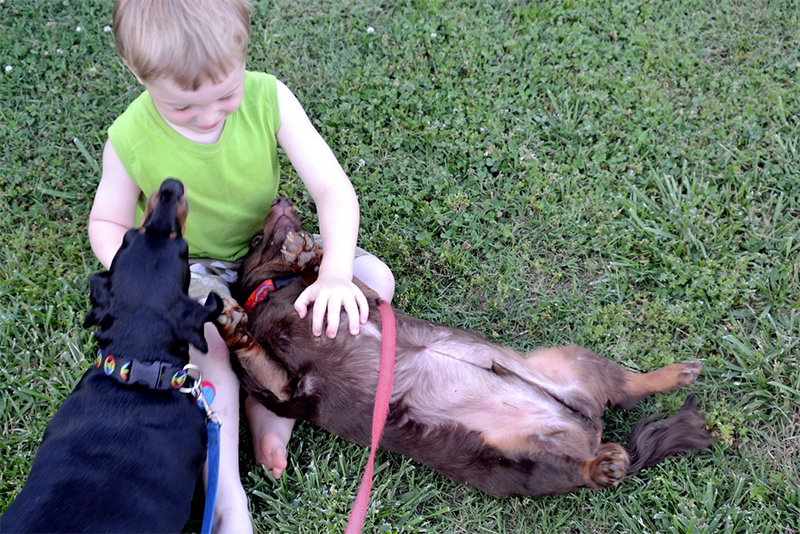
Dog Bite Prevention for Parents
Kids and dogs! They love each other. But sometimes, children can do things that scare dogs or even hurt them and then that family pet could bite. Dog bite prevention is something I hope every parent studies up on!
Roughly 50% of children will be bitten by a dog in their lifetime.[1] Most dog bites occur in children who are 5 years old or younger (68%) and almost 90% of the dogs were known to the children. [2]
When young children are bitten, 80% of the time, it's a bite to the face or neck. [3] This is partly because children are closer to the ground and their face is closer to the dog. But it is also due to children climbing on dogs, kissing them, holding their face and bringing their face close.
As parents, you can help prevent dog bites in the home with the following tips.
- Supervise young children.
If your child is very young, don't allow the dog and child to have access to each other unless you are closely supervising. - Don't let your kids climb on the dog.
While dogs will often tolerate kids climbing on them, your child may accidentally hurt the dog and a dog in pain may be a dog that bites. Never let kids lay on, climb on, or ride on dogs. - Dogs don't like to be hugged. Hugging is a primate behavior. Many dogs will put up with it, but some won't. Children should never hug dogs even if they've done so many times in the past.
- When a dog is eating or has a bone or other valuable resource, leave the dog alone.
When many of us were kids, we were told to leave the dog alone when he's eating. But in recent years, this advice is often not taught to children anymore. - Let sleeping dogs lie!
It's more than just a saying. A dog who is sound asleep may bite if startled. Children shouldn't approach a sleeping dog and touch it. - Don't let your children put their face into a dog's face.
If the child wants to kiss the dog, they can kiss their hand, and then pet the kiss on to the dog.
There are more things parents can teach their children about encoutering dogs outside of the home:
- Teach your children not to pet dogs without permission.
Not all dogs are friendly and if the owner doesn't notice your child approaching, a bite could result. Parents can either ask the dog owner or have their child ask the dog owner, "can I pet your dog?", before approaching. - Teach your child to Be a Tree.
If a loose dog runs up to your child, teach your child to not run or scream. they should stand still until someone can help or until the dog loses interest. Then your child should slowly back away. - Teach your child what to do if a dog knocks them to the ground.
Children should not scream. They should curl into a ball, protecting their neck and ears with interlaced fingers. - Children should never try to outrun a loose dog.
When a child runs, it could trigger a dog's instinct to chase.
[1] 2. Beck A M, Jones B A. Unreported dog bites in children. Public Health Rep. 1985;100(3):315–321
[2] https://www.ncbi.nlm.nih.gov/pmc/articles/PMC3820741/#JR120203oa-2
Find out about Dog Bite Prevention Seminars offered for parents and kids at schools, churches, community centers and other groups in the greater Sacramento, El Dorado, and Placer county area.
Trackbacks/Pingbacks